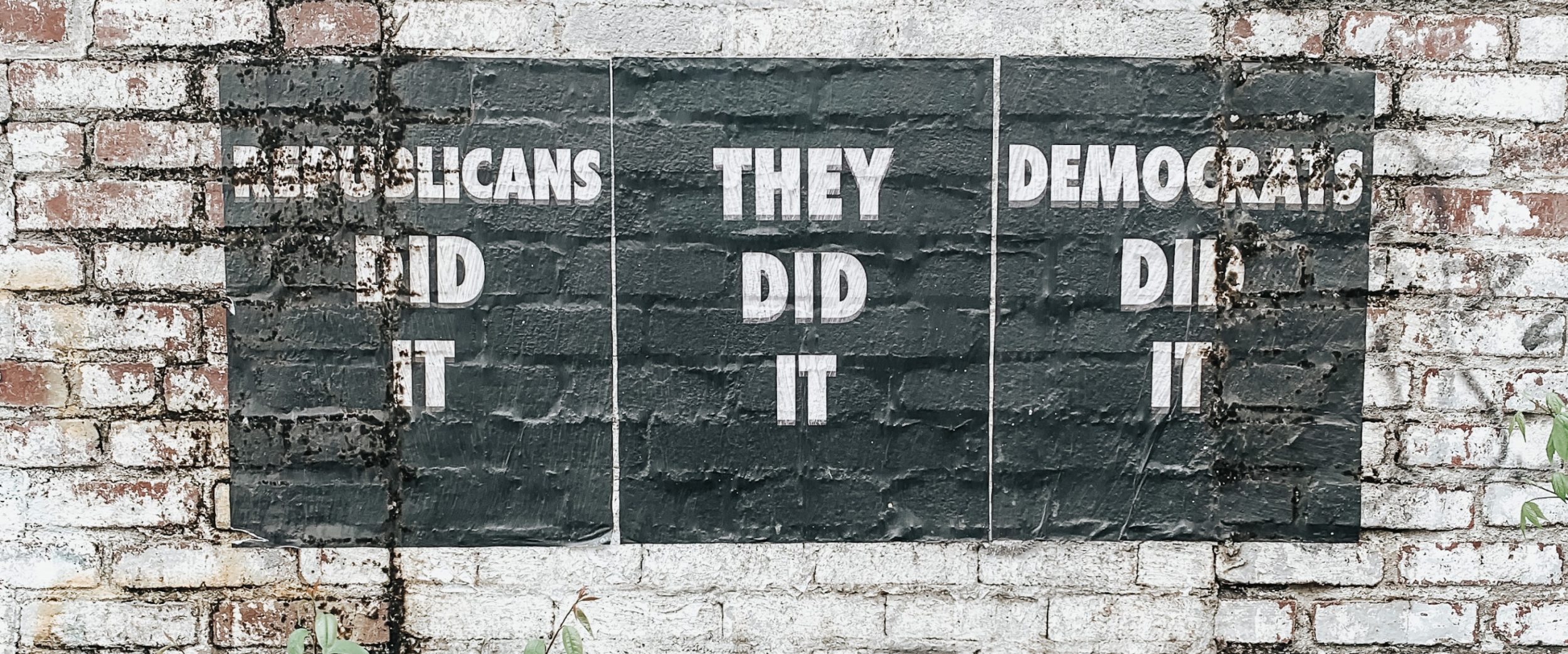Democrats today present themselves as the party of racial justice and the party concerned with doing something about mass incarceration. This is true of the party’s left — figures like Cori Bush and Alexandria Ocasio-Cortez — but also of its establishment, like Joe Biden, who had to disavow many of his past stances, laws, and statements on his road to the White House. But many scholars, activists, and reformers have long been and remain skeptical of Democrats, and with good reason: In original data analysis that I conducted and recently published in Political Research Quarterly, I find that contrary to some popular accounts, Democrats (and Democratic governors in particular) are often just as intimately involved in and responsible for mass incarceration.
Perhaps the prototypical example of the integral role of Democrats in the creation of the carceral state is the passage of the Violent Crime Control and Law Enforcement Act of 1994, the so-called crime bill championed by staunch Democrats like Bill Clinton and Joe Biden. This federal law funded policing efforts and ramped up the number of offenses eligible for the death penalty, among other punitive measures. These patterns of Democratic support for punitive policy are relatively well-recognized in this federal context, but I extend the theories of electoral competition and these examples of Democratic advocacy for punitive policy at the federal level to the states. Briefly, I argue that Democratic gubernatorial candidates facing tough elections will spend more on corrections and pull the levers of power to incarcerate people at a higher rate and admit more people to prison at a higher rate annually than Republican gubernatorial candidates that barely win.
Patterns of Democratic support for punitive policy have been explored in recent years by historians, legal academics, and political scientists like Elizabeth Hinton, Michael Fortner, James Forman, Jr., and Naomi Murakawa, among others. But little scholarship to date has sought to quantify the specific carceral impact of electing a Democratic chief executive in a contested state race. Though scholars recognize that Republicans are not the sole promoters of punitive policy, attention is still given to that party as the major driver of crime policy. I argue that this focus misses key Democratic involvement in the construction of the carceral state.
This is not to suggest that Republicans or Democrats are solely responsible for our punitive criminal justice institutions, but rather that it was a bipartisan effort. One of the most attractive and popular campaign platforms of the past four decades has been crime and criminal policy. Even though crime rates have been decreasing for decades, politicians of all political parties have used crime as a call to action to gain votes. As Democrat Bill Clinton once remarked, “I can be nicked on a lot, but no one can say I’m soft on crime.” Republican President George H.W. Bush made the so-called war on drugs a key part of his platform, and once said, “You will be caught. And when you’re caught, you will be prosecuted. And once you’re convicted, you will do time — caught, prosecuted, punished.” These two platforms are largely indistinguishable from each other and provide some initial evidence that both parties relied on crime as a key campaign issue. We see Democratic and Republican politicians alike using crime as a key campaign issue, from the 1980s to even today.
To investigate whether Democratic gubernatorial candidates that face tough elections are indeed more punitive than their Republican counterparts, I amass a dataset of gubernatorial elections and punitive policy outcomes in the states from 1982 to 2016. I use statistical methods to compare Democratic gubernatorial candidates that barely win to Republican gubernatorial candidates that barely win, to see how the pressures of a competitive electoral environment contribute to differences in corrections spending, and prison admissions and incarceration rates. I find consistent evidence that electorally vulnerable Democratic governors outspend and incarcerate their Republican counterparts, with some evidence that they also use their influence to drive up imprisonment at a higher rate annually. We can see these patterns visually. For example, the figure below shows Democratic gubernatorial vote margin plotted against corrections spending per capita. At the 0% margin of victory line (i.e. the Democratic and Republican candidate each received exactly 50% of the vote), there is a visual and significant jump in corrections spending per capita. This means that Democratic governors who barely win spend more on corrections per capita than their Republican counterparts, results that are statistically significant, as I show in my analyses. We see similar results when we consider either the incarceration rate or prison admissions rate, as well.
Scatterplot of corrections spending per capita and Democratic gubernatorial vote margin with a fourth-order polynomial line.
I focus on governors as they are essential drivers of state policy — and because the states are responsible for roughly 90 percent of the national incarcerated population. While governors can theoretically affect policy in a top-down or bottom-up fashion (i.e. governors directly create and implement policy or those under the governor, like bureaucrats, legislators, or the police, behave differently in response to governors’ priorities), I argue that this effect is likely direct and top-down (though it can happen both ways). Governors can spur massive prison building sprees, draft budgets that increase corrections spending, appoint bureaucrats or others who are punitive, express public support for punitive measures, direct their parties to prioritize punitive policies, and are frequently in control of the pardon and clemency process, among other methods. True, governors aren’t the only elected officials who can drive carceral policy and punitive measures — in many states, district attorneys, attorneys general, judges, and sheriffs are all cogs in the same wheel, each of them accountable to their voters or responsive to local conditions that differ widely. But governors, as chief executives of the state, are important drivers and messengers of state policy that we must consider in studies of state policymaking.
Former New York Gov. Mario Cuomo provides but one example of this dynamic. Cuomo, a Democratic governor who once called the prison boom “stupid,” governed New York from 1983 to 1994 and presided over a massive $7 billion prison construction program. Cuomo instituted these massive expansions in prison beds, and the budget for the corrections department, in part to address criticisms that he was soft on crime. Unfortunately, this strategy turned out to be ultimately unsuccessful as Republican opponent George Pataki beat him. But nevertheless, Cuomo’s about-face on corrections policy illustrates how electoral pressures can move Democratic governors (and even those who are staunchly opposed to policies like the death penalty) to the right in an effort to woo voters.
I provide compelling quantitative, statistical evidence to support the theory that electoral competition pushes Democratic governors to the right on the issue of crime, illustrating that the examples of Clinton, Cuomo, Richards, or Biden are not isolated incidents: that crime has been a key campaign issue of Democrats from the 1980s to the present day. And that this influence can and does happen in a top-down and/or bottom-up fashion. Governors have direct control over who remains incarcerated and why, and they can constrain other vital actors in the criminal legal system like prosecutors, judges, and the police. It is unlikely, though within the realm of the possible, that any substantive policy in a state could happen without the governor’s consent or express approval. But the election of a particular governor would almost certainly constrain the actors below them — for instance, a punitive prosecutor cannot prosecute crimes that do not exist, or might be discouraged from pursuing issues that the governor has declared are not in the state’s best interests or would put a strain on limited resources. And punitive legislators still need to cooperate with the executive branch to craft the budget or to make changes to the criminal code. Thus, though there are other actors at play in state policymaking, governors play an integral role in directing the policy priorities of their administration and the actors below them.
What does this research tell us? In part, it can inform current reform efforts through the emphasis on multiple parties and multiple actors in the construction of the carceral state. If both Republicans and Democrats alike collaborated to build our massive system of criminal justice institutions, it logically follows that a similar, or at least semi-bipartisan, effort is needed to undo or mitigate the harm of these policies. Whether policymakers are persuaded to reform because of budgetary concerns or concerns about fairness or racial inequality, the complex set of policies that gave rise to our carceral state requires a comprehensive effort from both sides of the aisle. My home state can provide some encouraging evidence that this is indeed possible. A bipartisan package of criminal justice bills were signed into law in Louisiana in 2017 and aimed to reduce prison populations and save the state money. The most incarcerated state in the most incarcerated nation in the world saw its incarceration rate fall, but the state remains America’s incarceration capital. These reforms, therefore, while admirable in their scope, did not go far enough. And Louisiana’s experience highlights that Democrats are not the sole potential saviors for our current predicament.
Likewise, the past year has provided lessons and cautionary tales in our quest for criminal legal reform. While COVID-19 spurred important policy changes — like releases of largely nonviolent offenders or those who were due to be released soon — these changes were not permanent. Governors took a variety of approaches during the pandemic — including sentence commutations, early releases, and executive orders that halted new admissions to overcrowded state prison facilities. But many of these steps were single events and temporary. Substantive policy changes to limit the incarcerated population and thus the spread of the virus remain unrealized. Not only that, but these reductions in the incarcerated population may be quickly undone by Democrats and Republicans alike — President Biden himself faces criticism as his legal team has decided thousands of nonviolent offenders released to home confinement to slow the spread of COVID-19 need to return to prison. Biden could grant clemency to these individuals to show his commitment to credible, criminal legal reform and shrink the federal prison population.
Governing through crime does little to make us safer and neglects to consider the importance of other social policy that could address and mitigate the negative personal and community effects of crime. Instead, substantive criminal justice reform requires us to think critically about the role of punishment and incarceration in the administration of justice and consider how the punitive impulses of policymakers across the political spectrum are important drivers of policy.
Image: Unsplash

